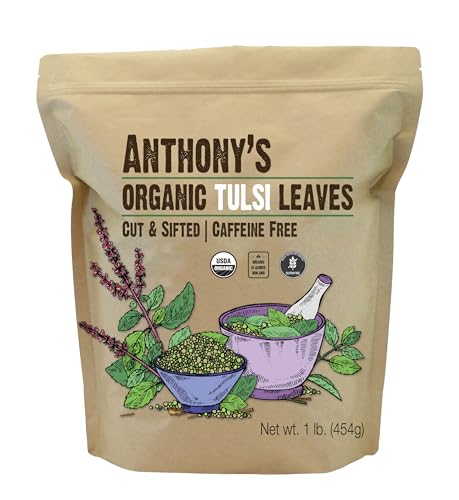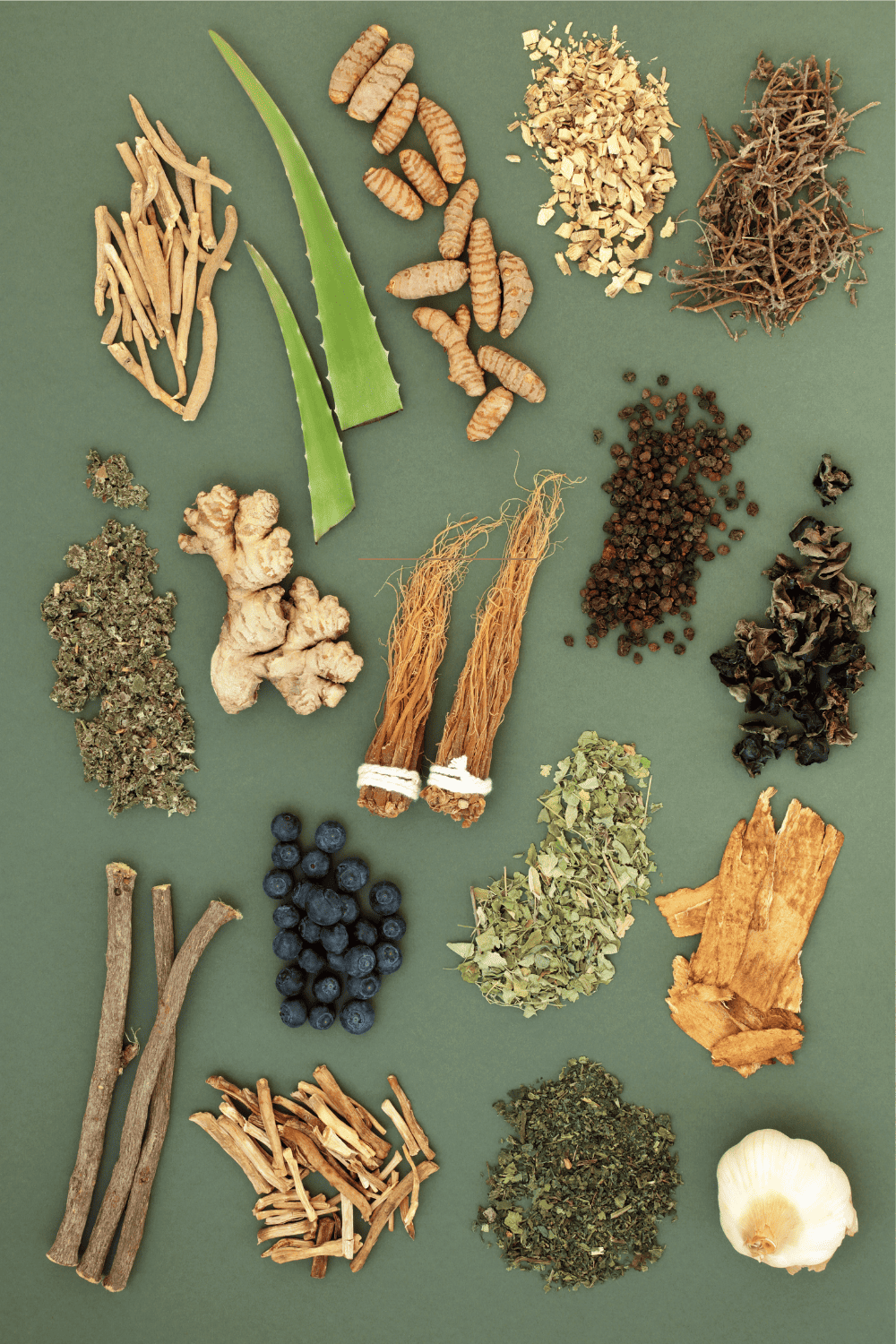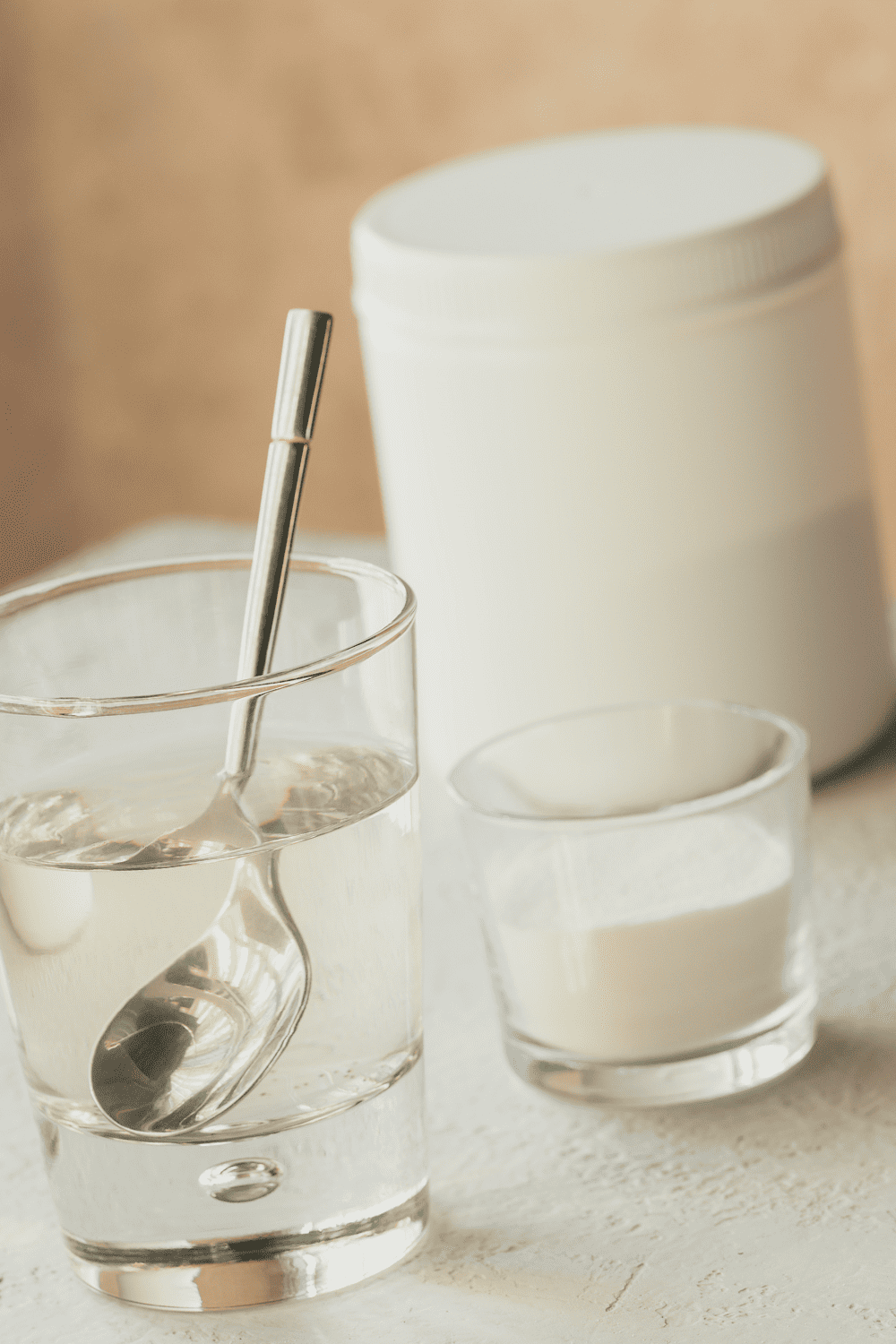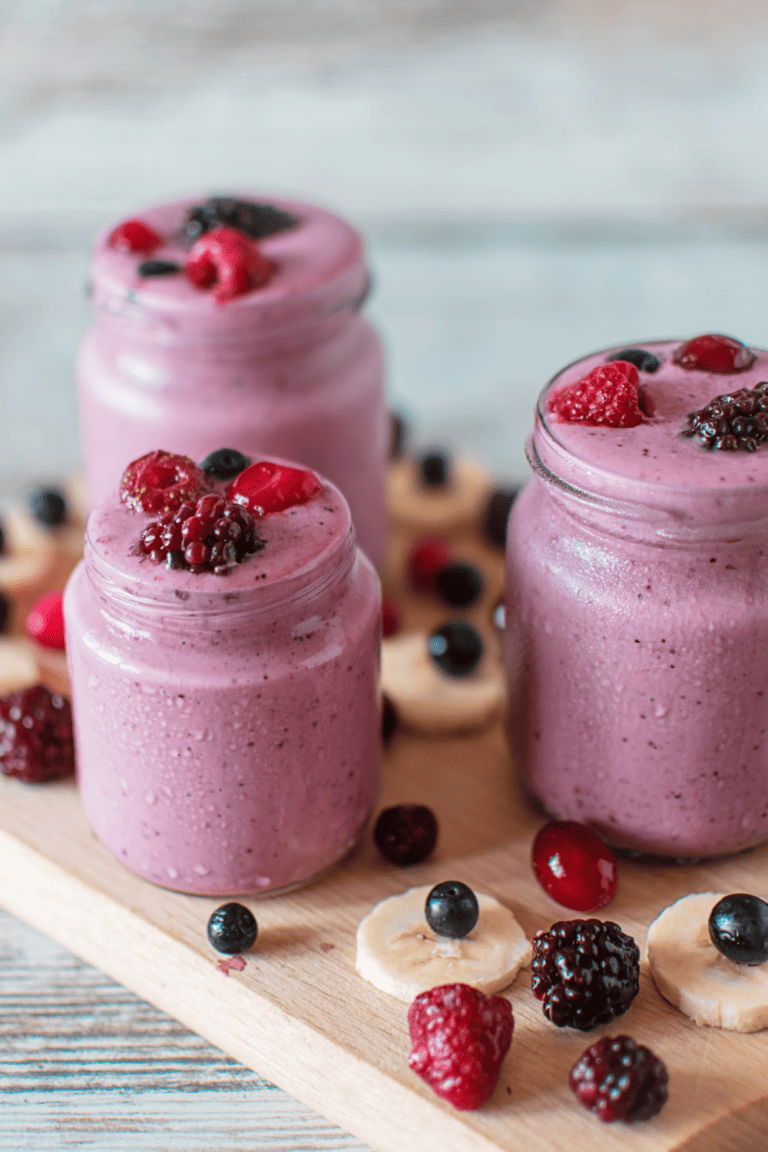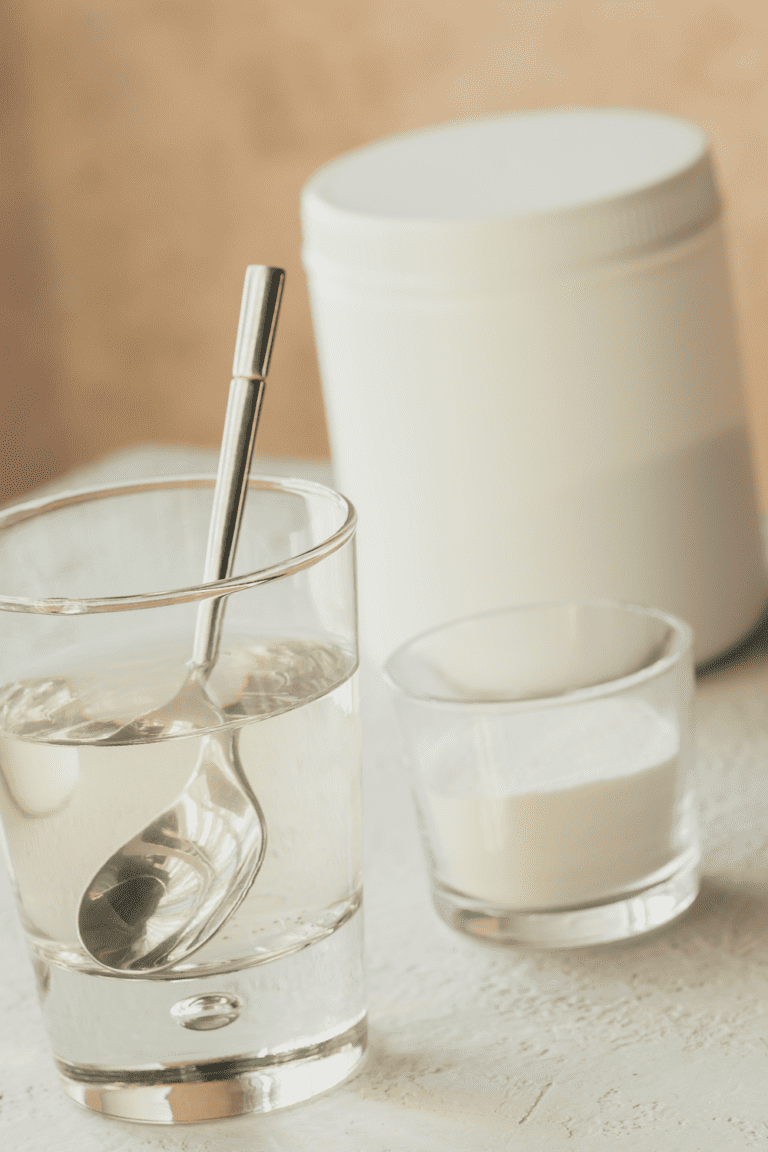How to Craft Adaptogenic Teas: 5 Recipes to Try
This post is about adaptogenic teas.
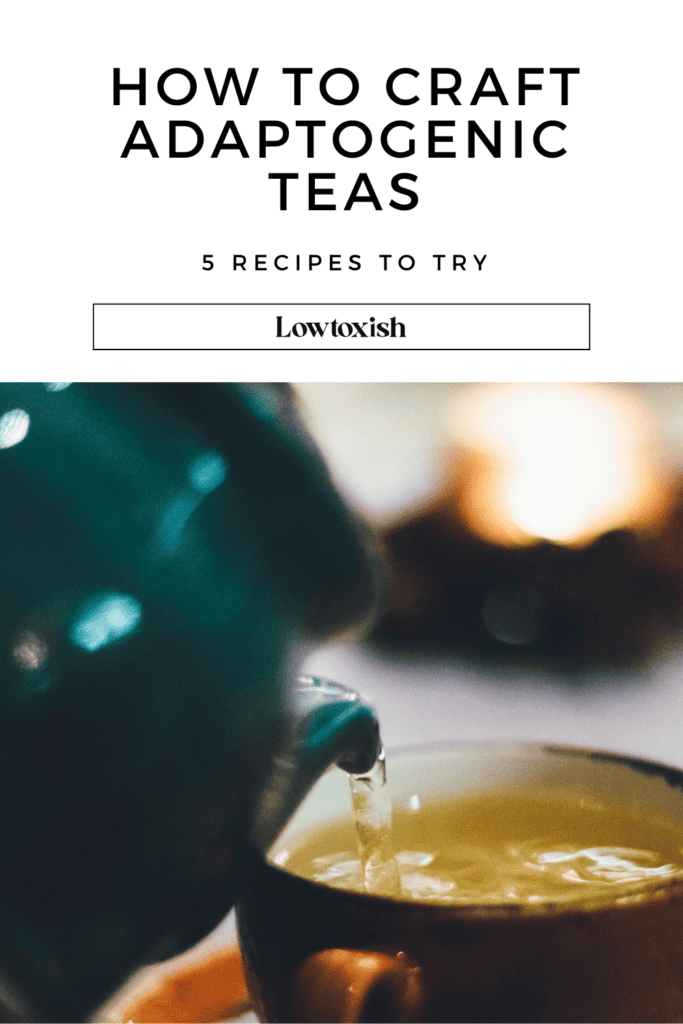
This post about adaptogenic teas may contain affiliate links, which means I’ll receive a commission if you purchase through my link, at no extra cost to you.
If you’re looking to embrace the world of adaptogenic teas, you’re in for a delightful journey of flavor and wellness. Adaptogens are nature’s allies, offering a range of benefits from stress relief to increased energy. In this guide, we’ll explore the art of crafting adaptogenic tea recipes and provide you with five versatile recipes to try.
But first, let’s dive into what adaptogens are and why they’re a fantastic addition to your tea repertoire.
What Are Adaptogens and Why Include Them in Your Tea?
Before we jump into the recipes, let’s get the lowdown on what adaptogens are and why they’re the superheroes of the herbal world. Adaptogens are natural substances that help your body adapt to stress and promote balance. Ever wonder about the secret resilience of plants thriving in extreme climates? That’s the power of adaptogens at work—nature’s marvels that can impart their resilience to us.

Understanding Adaptogens
Adaptogens are unique herbs and roots known for their ability to help the body adapt to stress and restore balance. They act at a molecular level by moderating the hypothalamic-pituitary-endocrine axis, the core stress response system. Essentially, adaptogens can calm you down and boost your energy without overstimulation.
When my husband and I were first dating, he was a missionary in El Alto (which means “The High Place”) in Bolivia. The elevation there is 13,615′ above sea level. The altitude is so high that newcomers often get headaches and have issues breathing.
Now, if humans have to adapt to those harsh (it’s also COLD) conditions then you can understand how some plants would also have to adapt to the stressful conditions. It is those plants that are adaptogens… they adapt to stressful conditions and because of that, contain powerful compounds that they then pass on to those who consume them.


Grab your Free
Printable 2024 Art Calendar

Embrace inspiration every day with our FREE 12 month 2023 printable art calendar, featuring stunning masterpieces from renowned artists.
Simply fill out the form bellow and the printable files will be sent immediately to your inbox.
The Magic of Adaptogenic Tea
Incorporating adaptogens into your tea ritual transforms it into a therapeutic session. The ritual of tea in itself is soothing but adaptogenic tea in a way is a medicine. When what your sipping contains adaptogens you literally might start to feel a little magic.
Key Benefits of Adaptogenic Tea
- Stress Reduction: Adaptogens like ashwagandha and holy basil have calming properties that can help mitigate stress, making them perfect allies in today’s fast-paced world.
- Energy and Vitality: Siberian ginseng and rhodiola can invigorate your body, enhancing stamina and reducing fatigue, all without the jitters of caffeine.
- Immune Support: Adaptogens such as astragalus not only support stress relief but also bolster the immune system, offering a double whammy of health benefits.
- Mental Clarity: Gotu kola and lion’s mane mushroom can improve focus and cognitive function, making adaptogenic tea an excellent choice for mental acuity.
Including adaptogens in your tea isn’t just about embracing a trend; it’s about leveraging ancient wisdom for modern well-being. Whether you’re aiming to de-stress, energize, or support overall health, there’s an adaptogenic blend that’s just right for you. So next time you brew a cup, remember you’re not just steeping tea; you’re steeping a potent elixir of resilience and balance.
The Art of Crafting Adaptogenic Teas: Tips and Tricks
Brewing adaptogenic tea is like painting with flavors and health benefits—it’s an art form where creativity meets wellness. But, just like any masterpiece, some techniques and nuances can turn your blend from good to extraordinary. Let’s explore some tips and tricks to elevate your adaptogenic tea crafting game.
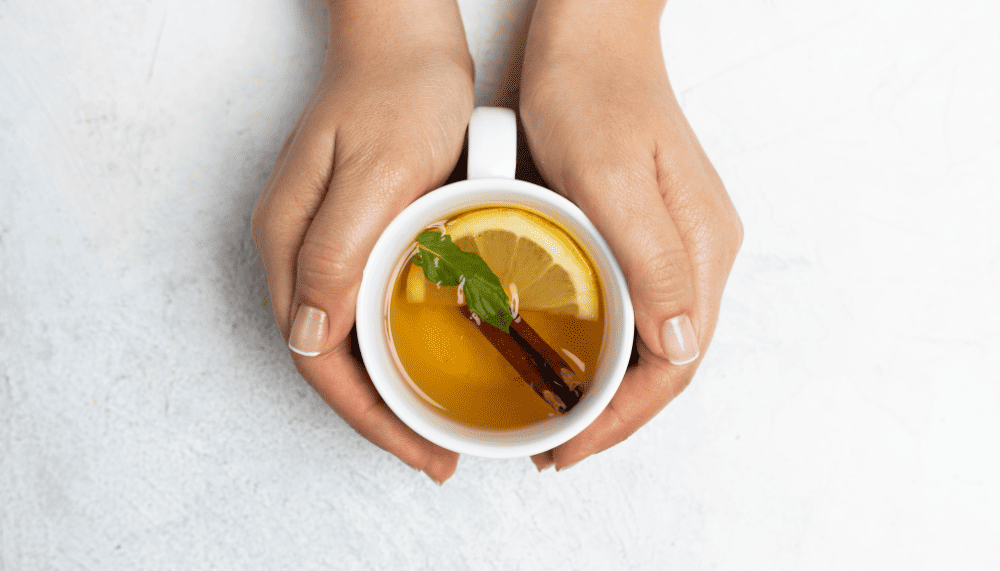
Selecting Your Base Tea: Adaptogenic Teas
Your base tea sets the stage. It’s like choosing the canvas for your painting. Whether you prefer the robustness of black tea, the antioxidants of green tea, or the caffeine-free gentleness of herbal teas, your base will significantly affect the final taste and benefits of your concoction. I’ve put an * next to the tea bases I feel like would be best.
- Green Tea: A rich source of antioxidants, perfect for a morning energy boost.
- *Chamomile: A calming herbal option, ideal for a relaxing nighttime brew.
- *Rooibos: Another antioxidant powerhouse, with a naturally sweet flavor.
- Linden Tea: Gentle and soothing, Linden tea is known for its calming effects, making it a good pairing for adaptogens that target relaxation and sleep.
- *Passionflower Tea: With a mild, grassy flavor, Passionflower tea is often used for its calming and sleep-inducing properties.
- Lemon Balm Tea: Lemon Balm offers a mild lemon-mint flavor and is known for its ability to alleviate stress and improve sleep quality.
- Lemongrass Tea: Known for its citrusy, refreshing flavor, lemongrass tea can aid in relaxation and digestion, pairing well with adaptogens for stress relief.
- Ginger Tea: With its spicy, invigorating taste, ginger tea is great for immune support and can complement adaptogens that focus on energy and metabolic health.
- *Hibiscus Tea: Hibiscus offers a tart, cranberry-like flavor and is high in Vitamin C. It’s a good choice for blends aimed at cardiovascular health.
- Licorice Root Tea: Sweet and soothing, licorice root can enhance the flavor of adaptogenic blends and support digestive and respiratory health.
- Black Tea: Known for its bold flavor, black tea is high in caffeine and can provide a stimulating effect. It’s perfect for those who need a strong pick-me-up.
- White Tea: Delicate and subtle, white tea is the least processed. It’s high in antioxidants and has a gentle, soothing taste, making it ideal for a peaceful moment.
- *Oolong Tea: A balance between green and black teas, oolong offers a unique flavor. It’s known for aiding digestion and metabolism, making it a great choice for wellness-focused drinkers.
- Peppermint Tea: A refreshing, caffeine-free option, peppermint tea is known for its digestive benefits and soothing properties. It’s perfect for a refreshing, calming experience.
Pairing Adaptogens with Complementary Flavors
Once you’ve chosen your base, it’s time to mix in your adaptogens. Think of this as blending colors to get the perfect shade. Some adaptogens have strong flavors that might overpower your tea, so pairing them with complementary flavors can create a balanced, enjoyable cup.
- Ashwagandha: Earthy and slightly bitter, pairs well with sweet herbs like licorice or flavors like vanilla. Known for reducing stress and anxiety, it adds a slightly earthy flavor.
- Rhodiola: Slightly bitter and astringent, harmonizes with citrus notes or mint for a refreshing lift. Often used for enhancing mental clarity and physical endurance.
- Holy Basil (Tulsi): Clove-like and peppery, blends beautifully with floral or fruity elements. Apart from its stress-relieving properties, it adds a clove-like spicy flavor. I love the smell and flavor of this one.
- Ginseng: Renowned for boosting energy and supporting immune health.
- Maca Root: Known for increasing stamina and balancing hormones, it has a nutty flavor.
- Schisandra Berry: Traditionally used for liver health and stress, it offers a unique berry-like taste.
- Chaga: Known for its earthy and slightly smoky flavor, Chaga pairs well with rich, deep flavors like cocoa or spices such as cinnamon. Renowned for its immune-boosting properties, Chaga adds a unique, grounding taste to any tea blend.
- Moringa: Moringa is known for its slightly grassy and earthy taste, with a hint of a peppery kick. Its flavor is often compared to that of spinach or matcha. Moringa is packed with nutrients, offering a rich source of vitamins, minerals, and antioxidants. It’s great for boosting energy levels and enhancing overall wellness, making it a valuable addition to any adaptogenic teas.
Here are some other adaptogens that are less common for tea use because of taste:
- Cordyceps: This fungus is known for increasing energy levels and athletic performance.
- Astragalus: Often used to boost the immune system and reduce stress.
- He Shou Wu (Fo-Ti): A traditional Chinese herb known for its rejuvenating properties.
- Eleuthero (Siberian Ginseng): Helps in combating fatigue and improving overall vitality.
- Gotu Kola: Known for improving cognitive function and reducing anxiety.
- Reishi Mushroom: Often used for its calming effects and immune system support.
- Valerian Root: Valerian has been used for centuries to improve sleep quality. It contains compounds that interact with the brain’s GABA receptors, inducing a sense of relaxation and drowsiness.
Mastering the Brew: Adaptogenic Teas
The brewing process is where your tea truly comes to life. The key here is patience and precision—steeping your tea for just the right amount of time at the right temperature to extract the maximum flavor and benefits without bitterness.
- Water Temperature: Too hot, and you might destroy the delicate flavors; too cool, and you won’t extract the full spectrum of benefits. Aim for around 200°F for most teas, slightly cooler for green teas.
- Add Your Chosen Tea Base: Begin by placing your selected tea base, like green tea or chamomile, into the tea pot or cup.
- Incorporate the Adaptogen: Add your chosen adaptogen to the same pot or cup. This could be whole herbs, powdered adaptogens, or extracts.
- Steeping Time: Steep the tea and adaptogen mix. The duration can vary:
- For delicate teas like white or green, steep for 1-3 minutes.
- For robust teas like black or herbal, steep for 3-5 minutes.
Customization and Experimentation
The beauty of crafting adaptogenic teas lies in the ability to customize and experiment. Don’t be afraid to try new combinations or adjust ratios to suit your taste and wellness goals.
- Sweeteners: A dash of honey, maple syrup, or stevia can add a new dimension to your tea without overpowering the adaptogenic benefits.
- Additional Herbs and Spices: Lavender for relaxation, ginger for digestion, or cinnamon for warmth and blood sugar regulation—each addition can tailor your tea to your current needs or desires.
Crafting adaptogenic teas is a journey of exploration, wellness, and pleasure. With each brew, you’re not just steeping tea; you’re steeping a potion tailored to your body’s needs and your palate’s preferences. So, go ahead, experiment, taste, and adjust. Your perfect cup of adaptogenic tea is waiting to be discovered.
Adaptogenics Teas Recipe #1: The Stress-Buster Blend
Need a break from the stress? Try our chill-out tea blend. It’s a mix of ashwagandha, lavender, and mint to help your nerves chill out. It’s like a chill pill in a cup, perfect for relaxing after a busy day or when you need to find your zen.
Life’s fast, but our Stress-Buster Blend is here to help you slow down. It’s a mix of cool adaptogenic herbs that calm your nerves and clear your head. Think of it as your go-to for calming vibes. Let’s dive into what makes this blend a must-have for your chill-out sessions.
Ingredients and Benefits:
- Ashwagandha: Known as the king of adaptogens, ashwagandha is at the heart of this blend. It’s renowned for its ability to reduce stress, combat fatigue, and promote overall well-being. This powerful herb adapts to your body’s needs, offering a grounding effect that centers and stabilizes.
- Holy Basil (Tulsi): Another gem in this calming concoction, holy basil, brings a slightly spicy, peppery flavor with hints of clove. Beyond its delightful taste, it’s praised for its stress-relieving properties, making it a perfect companion to ashwagandha.
- Lavender: With its signature floral aroma, lavender adds a layer of soothing fragrance to the tea. It’s not just a treat for your senses; it also has a calming effect on the mind, easing anxiety and promoting a peaceful state.
- Chamomile: A timeless remedy for restless nights, chamomile brings sweetness and light to this blend. Its gentle sedative properties help relax the muscles, soothe the stomach, and prepare your body for a restful sleep.
Crafting Your Cup:
- Gather Your Herbs: For a single serving, take a teaspoon each of dried ashwagandha root, holy basil leaves, lavender flowers, and chamomile flowers. If you prefer a stronger flavor or more potent effects, feel free to adjust the quantities.
- Steep Your Blend: Combine your herbs in a teapot or infuser. Pour hot water (not boiling) over them and let them steep for about 5-10 minutes. This gentle brewing method preserves the delicate flavors and therapeutic properties of the herbs.
- Customize Your Experience: Feel free to add a dash of honey, maple syrup, or lemon for added flavor and benefits. Honey can soothe the throat and add a comforting sweetness, while lemon adds a refreshing zing that balances the earthy tones of the adaptogens.
- Embrace the Ritual: As your tea steeps, take a moment to breathe deeply, set your intentions for relaxation, or simply enjoy the aromatic symphony unfolding before you. This ritualistic approach enhances the stress-relieving benefits of the tea, making each cup a holistic experience.
Enjoying Your Tea:
The Stress-Buster Blend is more than just a beverage; it’s a ritual of self-care that beckons you to slow down, savor the moment, and reconnect with your inner calm. Enjoy this tea in the evening to unwind after a long day, or anytime you feel the weight of stress pressing upon you. Its grounding effects are a gentle reminder that peace is always within reach, one cup at a time.
A Note on Consistency:
While you may feel some immediate relief from stress and anxiety, the true power of adaptogenic herbs lies in their cumulative effect. Regular consumption can help balance your body’s stress response system, leading to long-term improvements in your resilience to stress. So, make this blend a cherished part of your daily routine, and watch as it transforms your approach to stress and wellness.
Adaptogenics Tea Recipe #2: Energizing Morning Elixir
Kickstart your day with the invigorating Energizing Morning Elixir, a powerful blend of adaptogens and refreshing ingredients designed to boost your energy and focus from the first sip. This recipe is perfect for those looking to enhance their morning routine with a natural, uplifting beverage.
Ingredients Breakdown and Benefits
- Ashwagandha: This renowned adaptogen is key for managing stress and balancing cortisol levels, offering a smooth, sustained energy boost without the jitteriness associated with caffeine. Its grounding effects prepare you for a day of calm, focused activity.
- Rhodiola Rosea: Celebrated for its fatigue-fighting and endurance-enhancing properties, Rhodiola Rosea is the ideal addition to a morning tea blend. It sharpens mental clarity and physical stamina, helping you tackle the day’s challenges with ease.
- Ginger: With its zesty kick, ginger not only energizes the senses but also supports digestive health and boosts metabolism. Its warming qualities make this tea a comforting, invigorating start to the morning.
- Lemon Peel: The zest of lemon peel brightens the blend with a burst of citrus flavor and vitamin C, aiding in immune support and providing antioxidant benefits. It adds a refreshing twist that cleanses the palate and invigorates the body.
- Peppermint Leaves: The cooling and refreshing qualities of peppermint stimulate the mind and soothe the digestive system, making it a wonderful addition for mental alertness and overall wellbeing. Its vibrant flavor is the perfect wake-up call for your senses.
Brewing Your Energizing Morning Elixir
- Prepare the Herbs: Start by measuring a teaspoon each of dried ashwagandha root, rhodiola rosea, and ginger pieces. Add a tablespoon of lemon peel and a few fresh peppermint leaves to the mix. This combination balances the robust flavors and therapeutic properties for an effective morning boost.
- Boil Water: Heat water to just below boiling to preserve the integrity of the herbs. Boiling water can destroy some of the delicate compounds in the adaptogens and herbs, reducing their efficacy.
- Steep the Tea: Combine the herbs in a tea infuser or teapot, pour the hot water over them, and allow the blend to steep for about 10 minutes. This ensures the full extraction of flavors and beneficial properties from the ingredients.
- Enjoy: Strain the tea into your favorite mug. If desired, enhance the natural flavors with a teaspoon of honey or a slice of lemon. Sit back, sip, and savor the moment, letting the energizing properties of the adaptogens gently wake you up and prepare you for the day ahead.
This Energizing Morning Elixir is more than just a tea; it’s a ritual to start your day on the right note, combining the therapeutic benefits of adaptogens with the refreshing tastes of lemon and mint. Enjoy this blend as a vital part of your morning routine to embrace each day with energy, focus, and balance.
Adaptogenics Tea Recipe #3: Immune Boosting Brew
Elevate your body’s defenses with this carefully crafted Immune Boosting Brew. Combining potent adaptogens with herbs known for their immune-enhancing properties, this tea is your perfect companion for supporting overall health and resilience.
Ingredients Breakdown and Benefits
- Astragalus Root: Astragalus is a cornerstone in traditional herbal medicine for its immune-boosting abilities. It helps increase the body’s production of white blood cells, which are crucial for fighting off infections and illnesses.
- Echinacea: Known for its ability to fight the common cold and other respiratory infections, echinacea enhances the immune response. Its inclusion in the tea can help reduce the duration and severity of symptoms, should you catch a cold.
- Elderberry: Rich in antioxidants and vitamins that boost the immune system, elderberry also has anti-inflammatory and antiviral properties. It’s especially effective in preventing and easing cold and flu symptoms.
- Licorice Root: This sweet root not only adds depth and sweetness to your brew but also possesses potent antiviral and antimicrobial properties. Licorice root can soothe the throat, reduce coughing, and enhance immunity.
- Tulsi (Holy Basil): Revered in Ayurvedic medicine, Tulsi is a powerful adaptogen that helps mitigate stress while boosting the body’s defense mechanism. Its holistic benefits include supporting respiratory health and enhancing stamina.
Crafting Your Immune Boosting Brew
- Mix the Herbs: To create this blend, mix equal parts dried astragalus root, echinacea, elderberry, licorice root, and a handful of Tulsi leaves. This combination offers a synergistic effect that maximizes the immune-boosting properties of each component.
- Water Temperature: Heat water to a simmer—just below boiling—to preserve the beneficial properties of the herbs. Overheating can break down the delicate compounds in the adaptogens and diminish their effectiveness.
- Steeping Time: Combine your herbal mix in a teapot or infuser and pour the hot water over them. Let the mixture steep for about 15 minutes. This longer steeping time allows for a full extraction of the immune-supporting benefits.
- Serving: Strain the brew into a mug. You might add a spoonful of raw honey for its antimicrobial properties and a squeeze of lemon for an extra vitamin C boost. This not only enhances the flavor but also contributes to the immune-supportive qualities of your tea.
Enjoying Your Immune Boosting Brew
This Immune Boosting Brew is more than a simple tea; it’s a fortifying elixir designed to bolster your body’s defenses. Incorporate it into your daily routine, especially during the cold and flu season, or whenever you feel the need for an immune system boost. Its warming, slightly sweet, and herbal flavor profile makes it a comforting, healthful drink for all seasons. Enjoy this brew as part of a balanced lifestyle to keep your immune system strong and resilient against pathogens.
Adaptogenics Tea Recipe #4: Digestive Soother
Ease your digestive woes with the Digestive Soother adaptogenic tea blend. Crafted to calm upset stomachs, reduce bloating, and support overall gut health, this tea combines gentle adaptogens with soothing herbs for a comforting cup.
Ingredients Breakdown and Benefits
- Peppermint: Renowned for its digestive properties, peppermint helps relax the muscles of the gastrointestinal tract, alleviating indigestion, gas, and bloating. It’s a go-to herb for soothing an upset stomach.
- Ginger: With its spicy kick, ginger promotes healthy digestion by stimulating the production of digestive enzymes and reducing inflammation in the gut. It’s particularly effective in relieving nausea and motion sickness.
- Licorice Root: Beyond its sweet flavor, licorice root contains compounds that soothe the stomach lining, making it an excellent choice for addressing heartburn, acid reflux, and gastritis.
- Fennel: Fennel seeds are a natural remedy for indigestion and bloating. They help relax the digestive tract, ease gas, and promote healthy digestion, making them a valuable addition to this blend.
- Chamomile: Known for its calming properties, chamomile can relax the muscles of the digestive tract, reducing discomfort caused by indigestion and gas. It also has anti-inflammatory effects on the gut.
Crafting Your Digestive Soother
- Combine the Herbs: Create this soothing blend by mixing equal parts dried peppermint leaves, ginger pieces, licorice root, fennel seeds, and chamomile flowers. This combination creates a harmonious synergy of flavors and digestive benefits.
- Water Temperature: Heat water to a temperature just below boiling, ensuring that it doesn’t scorch the delicate herbal compounds. Overheating can diminish the effectiveness of the herbs.
- Steeping Time: Place your herbal mix in a teapot or infuser and pour the hot water over them. Allow the blend to steep for approximately 10-15 minutes, allowing the herbs to release their soothing properties fully.
- Serving: Strain the tea into a cup. For a touch of natural sweetness and added digestive benefits, consider adding a drizzle of honey or a slice of lemon. Sip slowly and savor the comforting embrace of this Digestive Soother.
Enjoying Your Digestive Soother
The Digestive Soother tea blend is your ally for achieving a harmonious, comfortable digestive experience. Enjoy it after a meal or whenever you feel digestive discomfort creeping in. The gentle, soothing qualities of this tea make it a valuable addition to your wellness toolkit. Incorporate it into your daily routine to promote digestive health and find relief from common gastrointestinal issues.
Adaptogenic Teas Recipe #5: Sleepy Time Tonic
Drift into peaceful slumber with the Sleepy Time Tonic, a soothing blend of adaptogens and sleep-promoting herbs. Crafted to relax the mind and body, this tea will help you ease into a restful night’s sleep.
Ingredients Breakdown and Benefits
- Chamomile: Chamomile is renowned for its calming and sedative properties. It can reduce anxiety, relax muscles, and promote a sense of tranquility, making it an ideal herb for bedtime.
- Lavender: Lavender is well-known for its soothing aroma and its ability to alleviate insomnia and anxiety. It can help lower heart rate and blood pressure, signaling the body that it’s time to unwind.
- Valerian Root: Valerian has been used for centuries to improve sleep quality. It contains compounds that interact with the brain’s GABA receptors, inducing a sense of relaxation and drowsiness.
- Passionflower: Passionflower has mild sedative effects and can reduce the time it takes to fall asleep. It’s particularly useful for those with racing thoughts or anxiety before bedtime.
- Ashwagandha: While primarily an adaptogen, ashwagandha can also support sleep by reducing stress and cortisol levels, which can interfere with a good night’s rest.
Crafting Your Sleepy Time Tonic
- Combine the Herbs: Create this bedtime elixir by mixing equal parts dried chamomile flowers, lavender buds, valerian root, passionflower leaves, and a pinch of ashwagandha root.
- Water Temperature: Heat water to just below boiling, ensuring it’s hot enough to fully extract the herbs’ soothing compounds without scalding them.
- Steeping Time: Place your herbal blend in a teapot or infuser and pour the hot water over them. Let the tea steep for approximately 10-15 minutes to allow the herbs to release their calming properties.
- Serving: Strain the tea into a cup. For an extra touch of relaxation, consider adding a teaspoon of raw honey or a dash of nutmeg. Sip slowly, allowing the tranquil flavors to prepare your body and mind for a peaceful night’s rest.
Enjoying Your Sleepy Time Tonic
The Sleepy Time Tonic is your ticket to a serene bedtime ritual. Enjoy it as part of your evening routine to signal to your body that it’s time to wind down and embrace restorative sleep. This calming blend is a natural way to promote deep, rejuvenating slumber, leaving you refreshed and ready to face the day ahead.
Customizing Your Adaptogenic Teas
One size doesn’t fit all, especially when it comes to wellness. Here, we’ll discuss how to tweak these recipes to match your taste preferences and health goals. Whether you’re looking to amp up the flavor or boost certain health benefits, customizing your adaptogenic teas makes them uniquely yours.
Discover the art of customization in crafting adaptogenic teas. Tailor your blends to match your taste and wellness goals:
- Experiment with Ingredients: Mix adaptogens and herbs to suit your needs—more energy, less stress, or better sleep.
- Adjust Flavor Profiles: Play with flavors by adding citrus zest, licorice root for sweetness, or honey for a touch of indulgence.
- Explore Tea Combinations: Combine herbs to discover unique taste and wellness combinations.
- Mindful Brewing: Pay attention to steeping times and water temperatures for the perfect cup.
- Keep a Tea Journal: Document your blends and their effects to find your ideal cup of wellness.
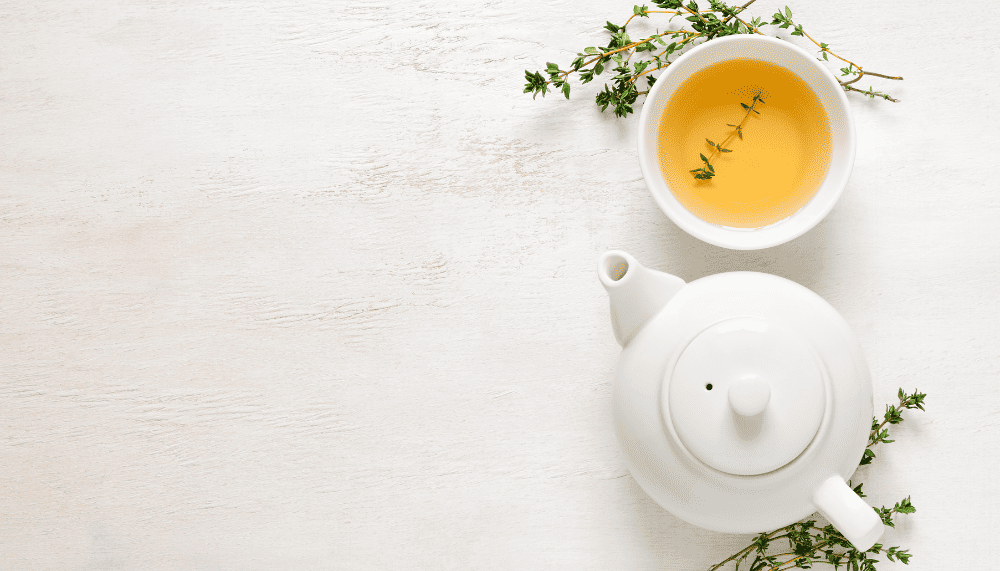
Bulk Preparing Your Favorite Adaptogenic Teas
Once you’ve experimented and found the adaptogenic teas you love, consider preparing them in bulk. This method saves time and ensures consistency in flavor and health benefits. Here’s how to do it:
- Calculate Proportions: Determine the ratio of each herb in your favorite blend. This might require some initial experimentation to get the right balance.
- Mix in Bulk: Combine the herbs in these proportions in a large bowl. Make sure to mix them thoroughly for even distribution of flavors and benefits.
- Store in Jars: Transfer the mixed herbs into mason jars or airtight containers. Label them with the name of the blend and the date of preparation.
- Easy Brewing: When it’s tea time, simply scoop out the necessary amount of your pre-mixed blend and steep it in hot water. No need to measure out individual herbs each time.
This approach is not only convenient but also allows you to enjoy your favorite adaptogenic teas at any time with minimal effort. Enjoy the ritual of tea-making with ease and consistency!
Create Your Own Adaptogenic Teas Apothecary
Step 1: Choose a Non-Toxic Tea Kettle
Here are two of my favorite non toxic kettles. You can find my complete list of non toxic kettles here.
ASCOT Electric Stainless Steel Tea Kettle

- No plastic touching water
- Auto shut off
- Inside made completely of 304 stainless steel
- Boil-dry protection
- Fast boil
- Cord free (the base of course has a cord but the kettle can be moved around freely).
- It comes in these colors: silver/stainless steel, blue, white, beige, light green, and black. The listings for the colored options is different than the listing for the stainless steel/silver option.
- Capacity: 1.7L
HARIO V60 “BUONO” GOOSENECK COFFEE KETTLE

- Capacity: 1L or 700mL
- Totally stainless steel parts touching water
- Made by Japanese brand with a 100+ year old good reputation.
- 700mL capacity makes 4 cups
- Heated on stove- not electric
- Well made.
- Over 11,000 ratings: 4.6 stars out of 5.
Step 2: Choose a Tea Pot for Brewing
Find my full list of nontoxic tea pots here (although the’s are probably my favorites).
Step 3: Choose Your Base Tea
Step 4: Choose Your Adaptogens
Step/Option 5: Add Balancing Flavors To Your Blend
Organic Rose Flower Rose Petals Tea
No products found.Final Step: Optional: Add Sweetener and/or Milk Substitute
- Sweeteners to Consider:
- Raw Honey
- Monk Fruit
- Maple Syrup
- Milks to Consider:
- Organic cow’s milk
- Coconut milk
- Oat milk
- Macadamia nut milk
Pre-made Adaptogenic Teas
Mushroom Adaptogen
Herbal Tea Sampler
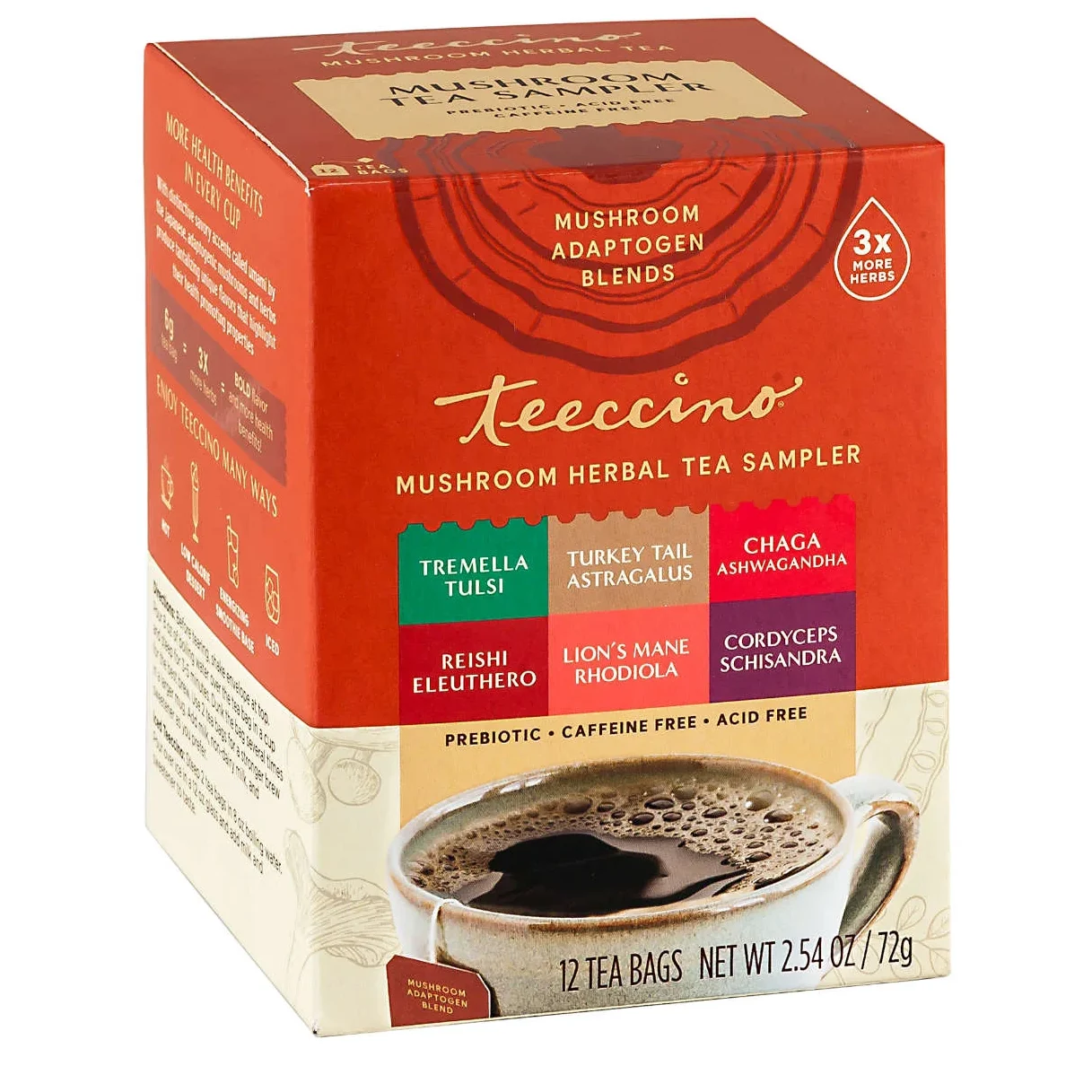
- Carob
- Reishi
- Chaga
- Eleuthero
- Ashwagandha
- Turkey tail
- Astragalus
- Lion’s Mane
- Rhodiola
- Cordyceps
- Schisandra
- Tremella
- Tulsa
- Cacao Nibs
- Dates
- Figs
- Almonds
- Ramón seeds
- Cocoa
- Cinnamon
- Cardamon
- Indian Sarasaparilla
Hormone Harmony Adaptogenic Tea
- Organic maca
- Organic carob
- Organic dates
- Organic Panax
- Ginseng
- Organic orange
This post was about adaptogenic tea.
Conclusion: Adaptogenic Teas
And there we have it, a fun new hobby that in a very real way is a bit like becoming your own farmacist- allowing you to find combinations that not only are effective in balancing your mood and stress but also that hit the spot taste-wise.
More posts like this…
Brewing Wellness: The Ultimate Adaptogen Tea Guide
The Ultimate List of Non Toxic Tea Kettle Options
The 11 Best Non Toxic Electric Tea Kettle Options
Favorite Health Posts
Favorite Posts
Last update on 2025-12-17 / Affiliate links / Images from Amazon Product Advertising API
This product presentation was made with AAWP plugin.












